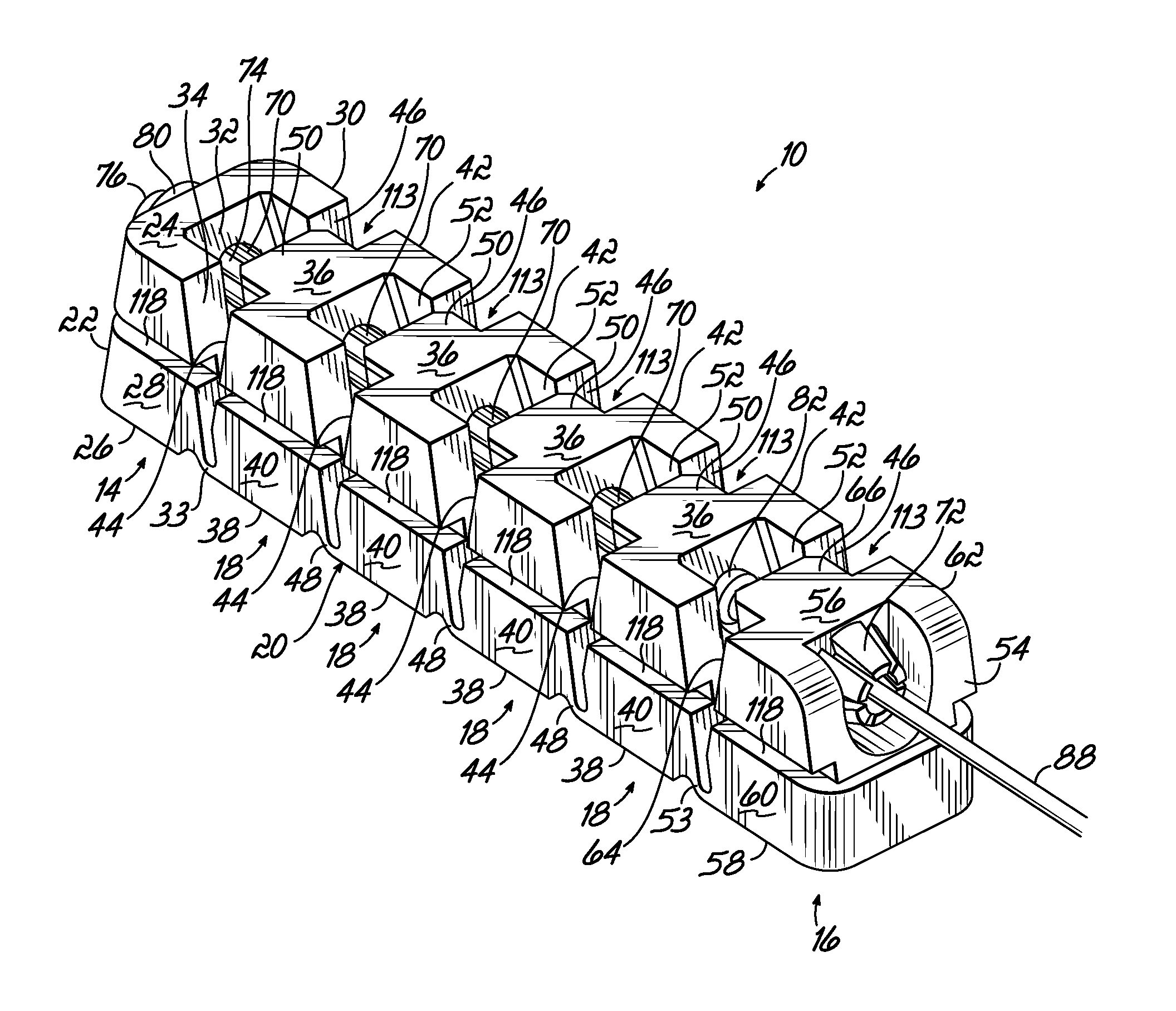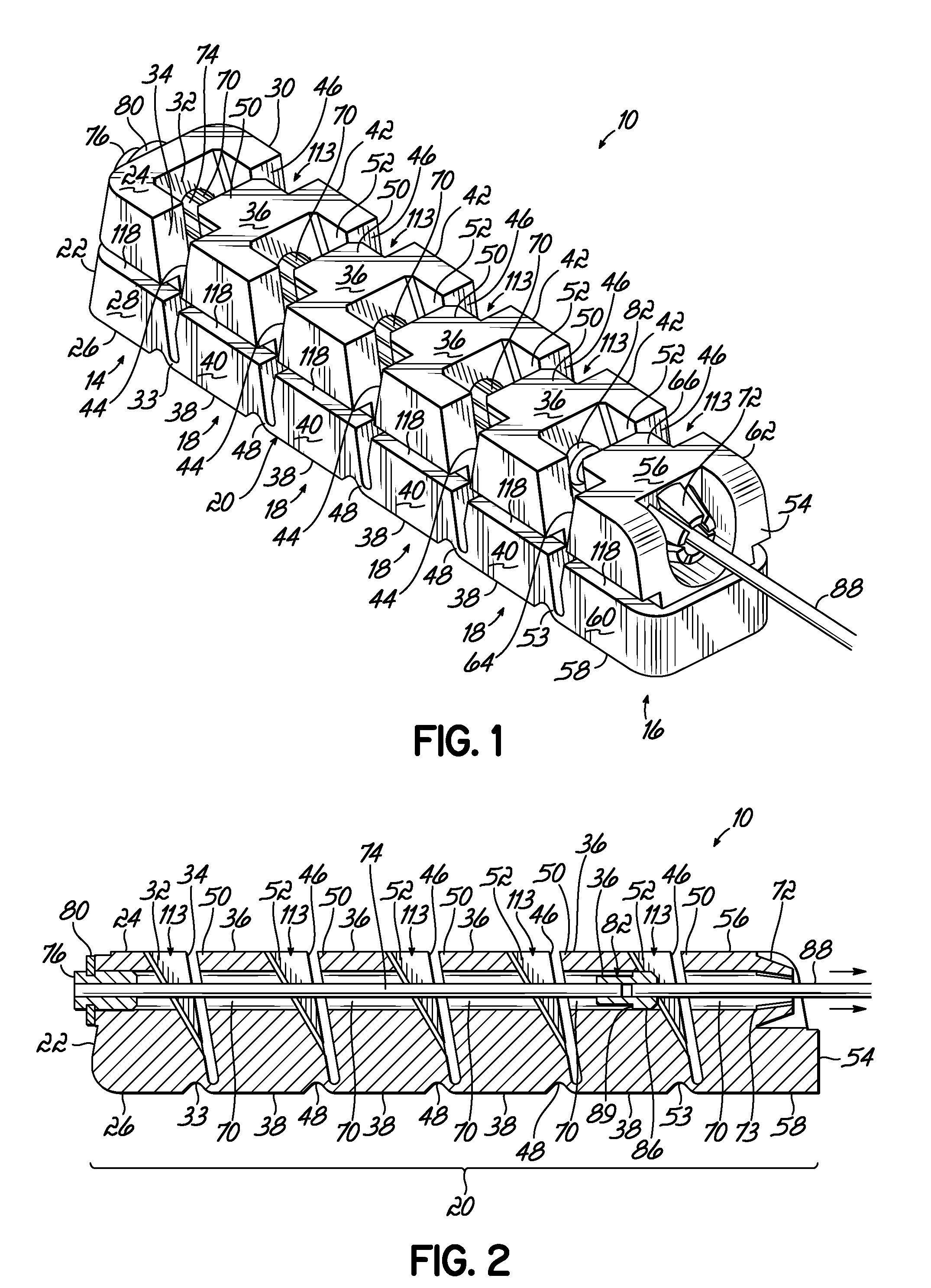Deployable segmented TLIF device
a segmented tlif and segmented technology, applied in the field of tlif devices deployed, can solve the problems of preventing the disc from performing the functions of the disc, reducing the disc height, and affecting the function of the disc,
- Summary
- Abstract
- Description
- Claims
- Application Information
AI Technical Summary
Benefits of technology
Problems solved by technology
Method used
Image
Examples
Embodiment Construction
The present invention is an intervertebral support 10 that is designed to be implanted within the intervertebral space between adjacent vertebrae. The support 10 includes a leading segment 14, a terminal segment 16 and a plurality of intermediate segments 18. In one embodiment, four intermediate segments are included. In other embodiments, more or less intermediate segments can be utilized depending on factors such as patient anatomy or implant positioning. The segments 14, 16 and 18 are connected together by a continuous connective portion 20 along the base of the segments 14, 16 and 18 that following implantation forms an anterior wall 21 of the implant (FIG. 7).
The leading segment 14 includes a rounded leading end 22, radially inner side 24, radially outer side 26, and mirror image top28 and bottom 30 sides. The leading segment 14 can optionally be configured to have a tapered or wedge shaped leading end 22 to facilitate implantation. The terms “radially inward”, “radially outwar...
PUM
 Login to View More
Login to View More Abstract
Description
Claims
Application Information
 Login to View More
Login to View More - R&D
- Intellectual Property
- Life Sciences
- Materials
- Tech Scout
- Unparalleled Data Quality
- Higher Quality Content
- 60% Fewer Hallucinations
Browse by: Latest US Patents, China's latest patents, Technical Efficacy Thesaurus, Application Domain, Technology Topic, Popular Technical Reports.
© 2025 PatSnap. All rights reserved.Legal|Privacy policy|Modern Slavery Act Transparency Statement|Sitemap|About US| Contact US: help@patsnap.com



